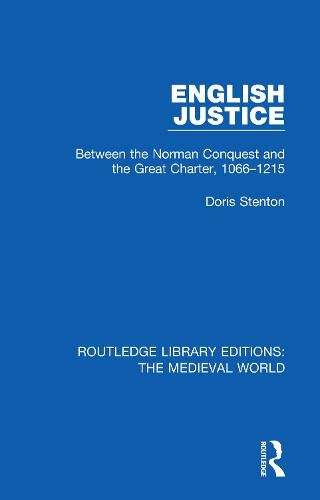Readings Newsletter
Become a Readings Member to make your shopping experience even easier.
Sign in or sign up for free!
You’re not far away from qualifying for FREE standard shipping within Australia
You’ve qualified for FREE standard shipping within Australia
The cart is loading…






Originally published in 1965, English Justice between the Norman Conquest and the Great Charter discusses the history of English justice in the period of the Norman Conquest, of the Angevin achievements, and of the contrasting reigns of Richard I and John. This book looks at this period in light of the great work done by Felix Liebermann and others on Anglo-Saxon law, which made possible a new estimate of the inheritance entered upon by the Norman conquerors. The book discusses how the writ and sworn inquest can now be safely recognised as arising in the years when the communal courts of the hundred and the shire - under royal surveillance - administered justice to the English people. The book also looks at the vigour of the conquerors and how, through the exertion of the king’s writ, the sworn inquest was developed into the jury. The book discusses how Henry II, not the West Saxon kings devised the returnable writ from which later developments in English judicial administration grew, and how he built up a permanent bench of judges based at Westminster, from there making periodic journeys to administer justice throughout the land. With all their many faults, the early Angevin rulers, King John as well as his father, were concerned to play their part as kings who provided justice and judgment for their subjects.
$9.00 standard shipping within Australia
FREE standard shipping within Australia for orders over $100.00
Express & International shipping calculated at checkout
Originally published in 1965, English Justice between the Norman Conquest and the Great Charter discusses the history of English justice in the period of the Norman Conquest, of the Angevin achievements, and of the contrasting reigns of Richard I and John. This book looks at this period in light of the great work done by Felix Liebermann and others on Anglo-Saxon law, which made possible a new estimate of the inheritance entered upon by the Norman conquerors. The book discusses how the writ and sworn inquest can now be safely recognised as arising in the years when the communal courts of the hundred and the shire - under royal surveillance - administered justice to the English people. The book also looks at the vigour of the conquerors and how, through the exertion of the king’s writ, the sworn inquest was developed into the jury. The book discusses how Henry II, not the West Saxon kings devised the returnable writ from which later developments in English judicial administration grew, and how he built up a permanent bench of judges based at Westminster, from there making periodic journeys to administer justice throughout the land. With all their many faults, the early Angevin rulers, King John as well as his father, were concerned to play their part as kings who provided justice and judgment for their subjects.